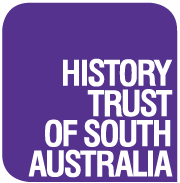The Museum was started in 1968 by a group of dedicated local people led by Keith and Margot McKenzie. Initially a sub branch of the Kingscote Museum and the Kangaroo Island Branch of the National Trust, in the 1980s the Dudley area became a National Trust branch in its own right.
The first room as one enters is dedicated to the maritime history of the area and includes two large ship models of Flinders’ Investigator and Baudin’s Le Geographe as well as memorabilia relating to the SS Karatta, Kangaroo Island’s long serving passenger and freight vessel. A short flight of stairs leads to a small room, once the school cloakroom with coat hooks still in place, and tells the story of the original school. This then leads to the main exhibition space, once the original school room, now known as the MacKenzie Room named after the museum founders. This area tells the social history of the district through artefacts and storyboards, including the local brick making and yacca gum industries and significant people of the district such as Mrs Mary Seymour née Thomas who is said to be the first child born in South Australia of a European father and an Aboriginal mother. Her father was a European sealer who had come from Tasmania in the 1820s, bringing with him an Aboriginal wife. Mary married William Seymour, one of the men who built South Australia’s first lighthouse at Cape Willoughby. Mary died in 1913 and the museum has the wheelchair she used in the latter years of her life.
In the museum grounds is a crushing mill, consisting of two huge basalt stones each weighing 3.5 tons (3.55 t) each. Driven by a 12 horsepower (9 kW) steam traction engine, it was used to grind and crush Kaoline clay and feldspar and is a relic of an early pottery industry at Penneshaw. The ground materials were transported by bullock wagon over rough bush tracks to the pottery and brickworks which once stood near the jetty. Made by Coombe, Mark Lane, of London, the mill was shipped from England in 1906 and installed at the china mine 15kms from Penneshaw. The mine closed down in 1910 when heavy winter rains flooded the shafts.
There is also a lifeboat from the SS Karatta in the museum grounds.

